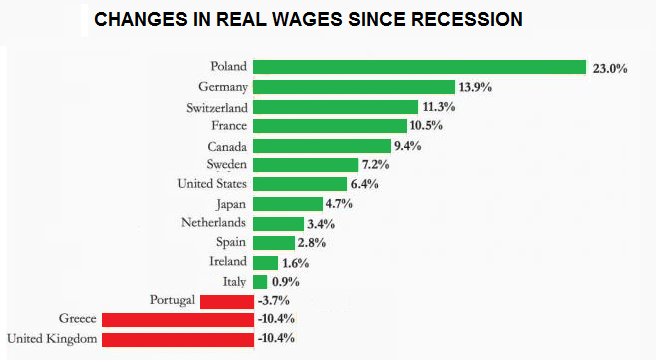
Ever feel you have been had over. This graph says a lot.
Wage growth is a key factor in determining living standards, aggregate demand and inflation. Since the great recession of 2008, nominal wage growth has fallen behind the headline inflation rate causing a significant drop in real wages.
Research from the ONS, stated that in 2012 real wages have fallen back to 2003 levels. (real wages fall) Between 2010-12, there has been an annual average drop in real pay of nearly 3%. Between 2014 and 206, inflation has fallen and wage growth picked up. This has led to positive real wage growth. The first sustained growth in real wages since pre 2007.
Until May 2008, wage growth was above inflation, causing positive real wage growth. But, since 2008, the UK has seen negative real wage growth.
The fall in real wages may be having a positive effect in reducing the unemployment rate. In previous (milder) recessions, the UK has seen a bigger increase in unemployment. But, in this recession, unemployment has not increased as much as we might expect. One reason to explain the UK unemployment mystery is falling real wages making labour less expensive. It helps reduce real wage unemployment.

Leave a comment
Make sure you enter all the required information, indicated by an asterisk (*). HTML code is not allowed.
Join
FREE
Here










